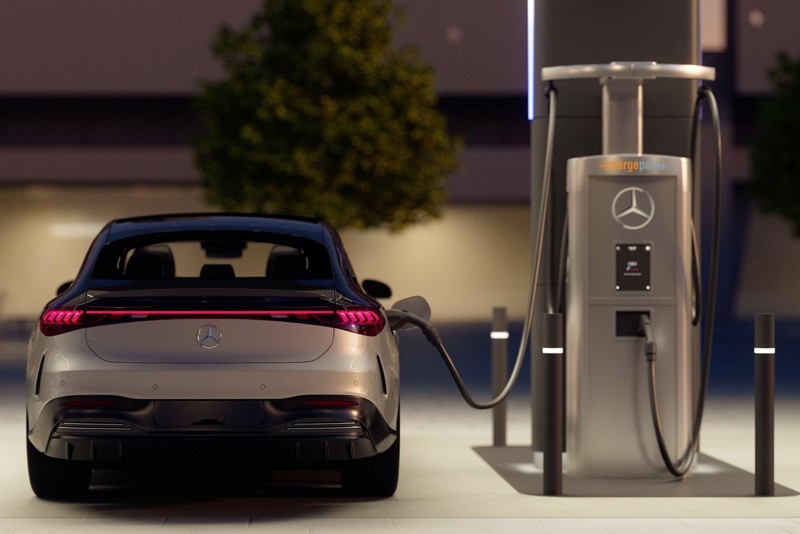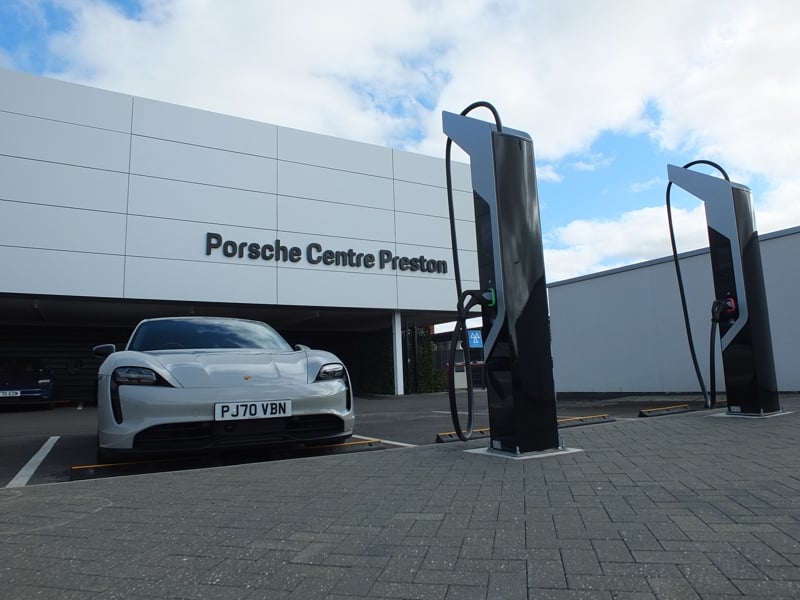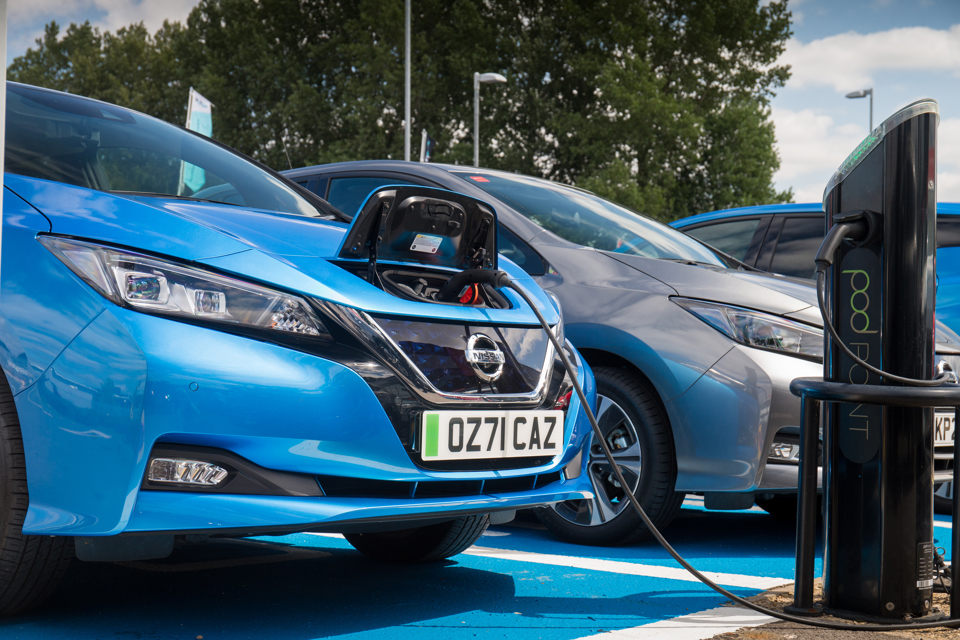Installing workplace charging can be a major investment for an organisation and will usually have big ramifications for its day-to-day operations. This makes it vital to get the installed infrastructure right both for now and the future, with a number of factors needing to be considered. These considerations will vary for different organisations.
“There’s no one-size-fits-all strategy for installing EV charge points or an exact figure for how many chargers you should have,” says Naomi Nye, head of sales at Drax Energy Solutions. Requirements can differ dependent on available on-site spaces and whether there is any existing infrastructure. The key is planning, and working to a long-term strategy that reflects future needs.
Nye adds: “Back in the day a lot of people thought charge points were just a socket on the wall. They’re not. There’s a lot that comes into it around management, including taking care of those charging points, how they are going to work with the vehicles, who’s using them, how they’re using them and whether there is a payment facility there.”
Installing workplace charging can be a major investment for an organisation and will usually have big ramifications for its day-to-day operations. This makes it vital to get the installed infrastructure right both for now and the future, with a number of factors needing to be considered. These considerations will vary for different organisations.
“There’s no one-size-fits-all strategy for installing EV charge points or an exact figure for how many chargers you should have,” says Naomi Nye, head of sales at Drax Energy Solutions. Requirements can differ dependent on available on-site spaces and whether there is any existing infrastructure. The key is planning, and working to a long-term strategy that reflects future needs.
Nye adds: “Back in the day a lot of people thought charge points were just a socket on the wall. They’re not. There’s a lot that comes into it around management, including taking care of those charging points, how they are going to work with the vehicles, who’s using them, how they’re using them and whether there is a payment facility there.”
Among the early decisions to make are: how many charge points are needed and what type? Currently, the dealer standards of franchises which already have, or are about to have, plug-in vehicles in their new car range will specify a minimum charger requirement. Often this is to have points for aftersales use and others out front for charging demonstrators.
CHARGER SPEED
The usage of demonstrators, provision of electric loan cars, and the ability to charge sold vehicles ahead of handover, will influence the speed of the charger required. For example, where an EV can be left plugged in overnight in a storage compound or workshop, a 7kW AC charger may be sufficient. If the dwell time is less, a faster charge point may be needed. The type of charge point installed will also significantly affect the cost of the project.
The Energy Saving Trust reports the cost of a 7kW double-headed post is £1,500, a 22kW doubleheaded post is £2,500-to-£5,000, while a rapid charge unit can be up to £35,000. In many instances, the amount of energy needed to power a large number of chargers will exceed the supply available to the site.
 In the main this can be tackled in three ways: by using a load management system which limits the amount of power being used at any one time, a battery energy storage solution, or through a substation upgrade which increases the amount of power going into the site. A load management system works by balancing the speed of charging between the number of vehicles plugged in.
In the main this can be tackled in three ways: by using a load management system which limits the amount of power being used at any one time, a battery energy storage solution, or through a substation upgrade which increases the amount of power going into the site. A load management system works by balancing the speed of charging between the number of vehicles plugged in.
For example, consider a site that has a bank of six 22kW charge points with 32kW of spare capacity. When all six chargers are in use, the load management equipment limits the amount of power available to each to avoid exceeding the spare capacity.
This may mean plugged in vehicles are taking on electricity at one-sixth of the capacity available, or approximately 5kW.
If three vehicles are plugged in, they charge at half of the capacity available (around 10kW) and so on. This can be combined with smart charging, where drivers specify the amount of charge they need and at what time, and the system will balance the charge between the vehicles to achieve this.
UPGRADED POWER SUPPLY
However, this may not always be suitable. In practice, dealerships that require multiple vehicles to be charged at the same time may need to investigate whether an upgraded substation is required.
Before April 2023, the substantial cost of this substation work had to be paid for by the organisation requiring it. However, an Ofgem ruling means the cost now has to be spread across the electricity distribution sector instead.
Organisations are still responsible for any on-site groundworks required, and this may influence the location of charge points given that the more excavation needed to install the infrastructure, the more expensive the work becomes. The closer charge points are to the power supply, the better in terms of reducing groundwork costs. Currently, the Government has two grant schemes to help organisations – the workplace charging scheme and the electric vehicle infrastructure grant for staff and fleets.
Dealer groups can unlock extra return on investment by making their front-of-house charging infrastructure available to the general public. However, if an organisation decides to open up its charge points to non-employees, it will need a back office system which allows it to set different tariffs for different users, as well as methods of payment. For instance, while demonstrators and customers’ cars on site incur zero fees, out-of-hours visitors pay an appropriate market-linked tariff.
AVOIDING OVERLOAD
An organisation can have the most meticulously planned, most technologically advanced and expensive workplace charging infrastructure possible installed, but, if it regularly breaks down, then this will all be in vain.
To prevent this scenario, organisations need to maintain chargers in a serviceable condition. The first step to 24/7 uptime occurs before a spade has even broken the ground to lay power cables. Companies need to ensure that when the infrastructure goes in, the number of chargers and specification are right for the site, particularly where power capacity is concerned.
“Issues will happen if you try to overload a site or install too many chargers,” says Graham Rowlands, managing director of Devitech, which provides commercial EV charging installation, support and aftercare. Selecting robust chargers made by hardware manufacturers with a ready supply of replacement parts is also important, with infrastructure installers and maintenance companies advising businesses to discuss the reliability of chargers with their peers.
 Not all hardware performs to the same standards and any initial savings from buying a poorer quality product can soon evaporate in vehicle downtime and lost fleet productivity.
Not all hardware performs to the same standards and any initial savings from buying a poorer quality product can soon evaporate in vehicle downtime and lost fleet productivity.
Since July 2022, the Government’s Smart Charging Regulations have made it compulsory for all home, workplace and commercial vehicle chargers sold in the UK to have ‘smart functionality’. This allows for charging when there is less demand on the grid, or when more renewable electricity is available. It also ensures charge points have the ability to communicate and receive information, essential for the real-time monitoring of chargers so any faults can be detected and diagnosed, hopefully leading to a swift fix.
It also allows for over-the-air firmware updates. If there is an interruption to charging, some chargers can ‘selffix’ minor issues and, if this doesn’t work, they alert both fleet managers and charging solution providers to attempt a remote fix.
In many instances, what appears to be a problem is simply a drop of Wi-Fi communication, with the charger still supplying power to a vehicle, but power outages can trip breakers and components do break down. Dealerships should ensure that selected charge points are OCPP (open charge point protocol)-compliant. This means that any backoffice monitoring can be done by any company, whereas a non-compliant charger might be accessible only to a specific hardware manufacturer.
Charger aftercare solutions tend to bundle the remote monitoring of chargers with a maintenance package that sees engineers inspect hardware on a six-monthly or annual basis, paid for by a subscription-type fee per charger. Charging solution providers are also keen to train fleet and facilities managers to be ‘first responders’ in the case of a charger failing, with priority given both to the post-installation handover to instructing drivers about how to charge safely and securely.
GRANTS FOR WORKPLACES
The workplace charging scheme (WCS) provides support for organisations towards the cost of installing charge point sockets at their sites. The scheme covers up to 75% of the total costs of the purchase and installation of EV charge points (inc. VAT) capped at a maximum of £350 per socket or 40 sockets across all sites per applicant. An organisation may apply for subsequent vouchers for additional charge points and sites provided its cumulative total does not exceed 40 sockets.
Charge points installed to charge demonstrators, showroom vehicles, courtesy cars and customer vehicles that are booked in for service and repair are eligible under the WCS.
The electric vehicle infrastructure grant for staff and fleets differs as it is open specifically to a business with 249 employees or fewer. This grant provides funding towards the cost of wider building and installation work that is needed to install multiple charge point sockets. It covers 75% of the cost of the work, up to a maximum of £15,000.
An organisation can get up to £350 per charge point socket installed and up to £500 per parking space enabled with supporting infrastructure. It can receive up to five grants, but these must be across five different sites. Other eligibility requirements include the charge point being used only by the building’s staff and vehicles; it cannot be used by members of the public.
At least one charge point socket must be installed as part of the work, but work must be carried out on at least five parking spaces so they either have charge point sockets immediately or are ready to have them installed in the future.
Login to continue reading
Or register with AM-online to keep up to date with the latest UK automotive retail industry news and insight.















Login to comment
Comments
No comments have been made yet.